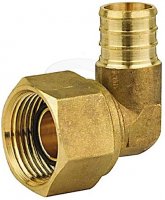Sarg
Enjoy Learning
Getting together items needed to install a new water heater.
I intend to use 3/4 swivel elbows for the water connections and have questions on the proper technique to tighten them when they have a rubber sealing grommet or washer as pictured.
Is it hand tight and then 1/2 a turn or should they be tighter ? Would a thread sealant be beneficial to lube the threads ?
I intend to use 3/4 swivel elbows for the water connections and have questions on the proper technique to tighten them when they have a rubber sealing grommet or washer as pictured.
Is it hand tight and then 1/2 a turn or should they be tighter ? Would a thread sealant be beneficial to lube the threads ?

